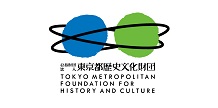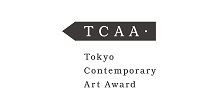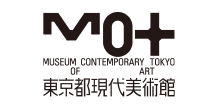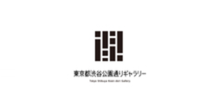Mary Lou DAVID
- TOP >
- Archives >
- Residency Program >
- Mary Lou DAVID
Curator Residency Program
update: 2024.4.4
Mary Lou DAVID
| Participating Project | Curator Residency Program |
|---|---|
| Activity Based | Ho Chi Minh City |
| City / Place stayed | Tokyo |
| Period | 2023.9 - 2023.11 |
Purpose of the residency
A few years ago, I came across Ryoko Sekiguchi's book titled Nagori. While her work focused on observations of nature and its produce, I was intrigued by this term signifying both the remains of the waves and a nostalgia for a season that had just left. This inspired me to develop a project focusing on untranslatable words and how they would in turn be translated into artworks, offering a glimpse of the subtle perceptions intrinsic to our languages. At times we forget how words have profoundly shaped our individual cultures and the way we feel or experience the world, how linguistic nuances have made each culture undefinable and unique. As we constantly ingest sensations and emotions, we organise them into concepts, prioritising some over others according to the words that our languages have given us access to. The project - transposable into various languages as an ongoing enquiry - aims to develop new artworks and present existing pieces tied to these untranslatable words that encompass so much about our cultures, tying an artist's work with a linguistic view and sensitivity, an offering an immersive experience that goes beyond the lines of a lexicon.
Plan during the residency
- Create a series of interviews - with photographic documentation - with artists and develop these into a series of short texts. These will serve the basis of the website archive for the project.
- Conduct additional interviews with Japanese linguists or language history specialists to finalise the curatorial proposal and introductory text of the project.
- Begin selection and discussion of potential collaborators in regards to the project: select existing works or sketch out possible commissions for a future exhibition.
- Build a network of organisations that have a focus on new media - especially experimental moving image and video art to understand how to better support such practices back in Vietnam.
- Build network of independent / grassroot arts organisations with an interest in regional exchanges and interdisciplinary practices.
Activities during the residency
I came to TOKAS Residency to launch a long-term curatorial project titled 'Of Subtle Perceptions', based on the theoretical framework of language relativity and how specific cultures and languages influence our worldview. With each chapter and location, I undertake a series of interviews with artists, trying to understand how their language of art-making might intersect with very specific local contexts and understandings. This ongoing data will slowly morph into a series of short texts presented in an interactive website or online publication. In a second phase, the project will propose collaborations with artists to develop new bodies of work based on untranslatable words of their choosing and how these are in turn translated into artworks. The residency was also the opportunity to connect with artists, curators, researchers and a variety of art spaces and organisations in hopes of creating new networks and exchanges between Japan and Vietnam.
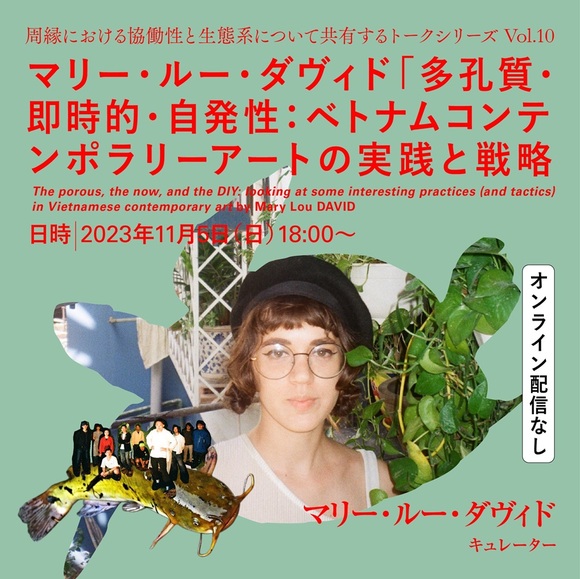
The flyer of "The porous, the now and the DIY" talk at Yamanaka Suplex MINE (November 2023)
Grateful to attend the 'Beer with Artists' talk organised by Tra Travel and getting a glimpse of the artist community of Osaka
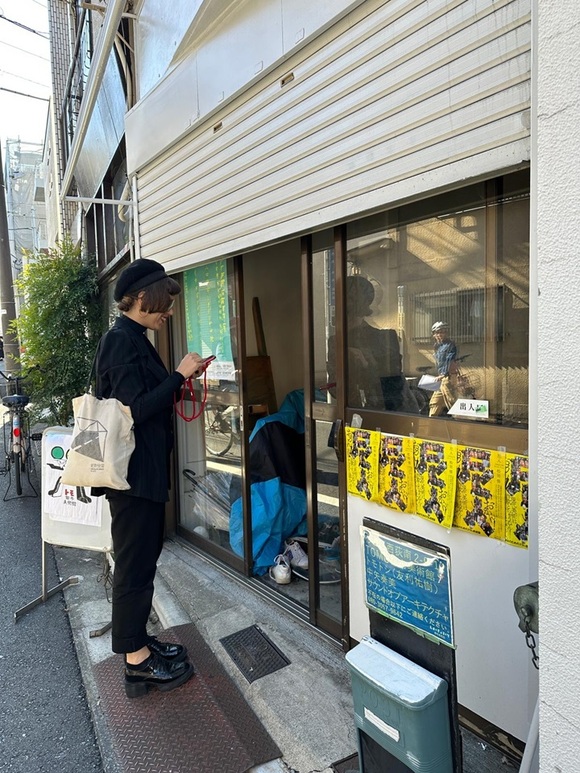
Excitedly waiting for performance artist Tomotosi to introduce his performance archive at the TOMOTOSHI Museum of Contemporary City
Outcome of the residency
Since the project was only launched and tested during the residency, it was very much in its experimental phase. The methodology and interview system had to be constantly readjusted, partly due to the nature of working with pre-existing artworks possessing their own narrative and history, but also due to difficulty of asking artists to summarise their entire life's practice within a short amount of time. Other linguistic challenges - such as possessing sufficient understanding of one's language in relation to others in order to define the concept of untranslatability - highlighted the need to slow down the project and divide the interview format into smaller segments over time.
The interviews, and subsequent texts, were meant to launch an online archive but in reality I became more interested in understanding the thinking and creative process of artists, sharing these findings with the public, and focusing on our long-term goal: how can artists and I create new artworks from scratch playing with the idea of untranslatable words? The establishment of trust for this kind of project - a collaboration between artist and curator - cannot really be achieved within a 2-3h interview.
It became apparent that in order to continue this project, I would have to revisit these discussions over a longer period of time, get a chance for second, third, or more encounters. Privilege time with those I had met instead of amassing new data from future interviewees. Before honing in on the core of the project, the 'untranslatable words,' I first needed to fully understand their art language, their grammar of art-making, their lexicon of ideas which would become a compass and mindmap in creating the texts or any future collaborations.
From January until March 2024 I will come back to Japan to continue my research through a fellowship provided by the Ishibashi Foundation and the Japan Foundation. This will give me the opportunity to revisit the interviews with artists for a second time in Tokyo and Osaka, and hopefully meet artists from other art contexts, such as Kyoto, Hiroshima and Okinawa. I am mindful of existing disparity within the collected data and hope to bridge such gaps of knowledge during the subsequent trip. The archive is open to everyone - it welcomes all languages, generations, mediums. Artists that feature language in their practice will be of interest but not a necessity. I am mostly interested in artists that really take into consideration the possibilities and tactics of their medium, that show self-awareness or reflection in regard to their practice and methodology.
While the project is still in its early stages of adjustement, I do believe it has potential over time. The archive can evolve and be added to, open-up to more word-entries and languages. As an exhibition, it also has the possibility of morphing by inviting artists from the same language group or perhaps featuring a variety of languages around a theme. I look forward to sitting down at my desk in March and see what emerges from this initial phase of research.
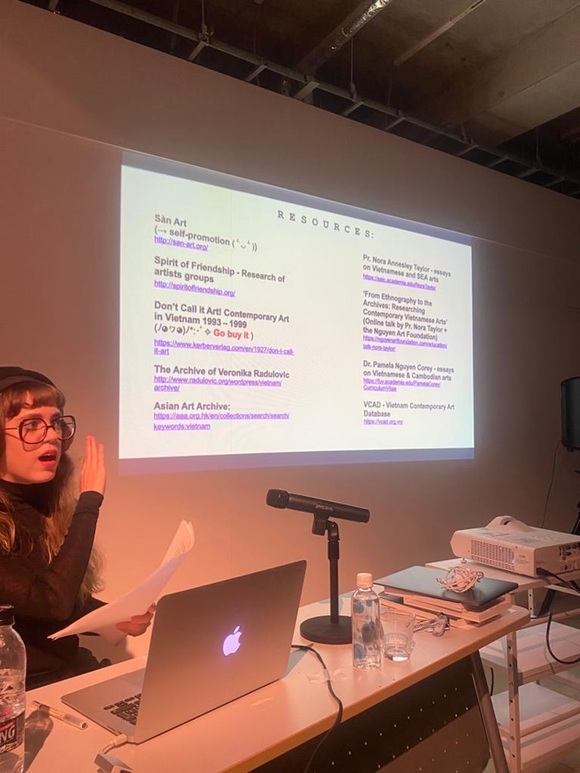
Curator Talk Vol. 2 on the Vietnamese contemporary art scene at TOKAS Residency
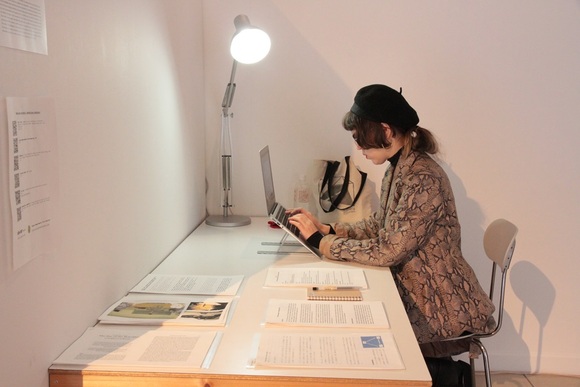
Research booth set-up at the Tokas Residency open-studio / Photo: Marko Vuorinen
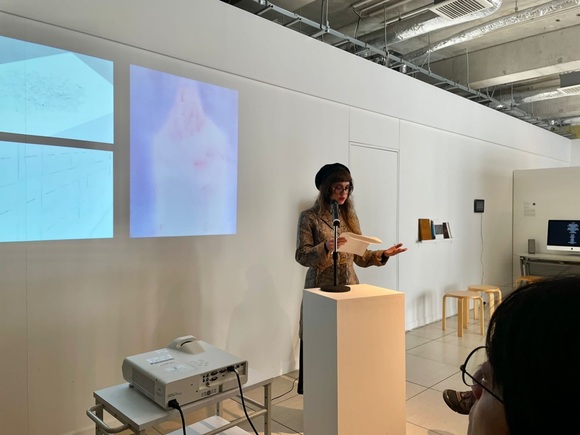
Open Studio presentations at TOKAS Residency




